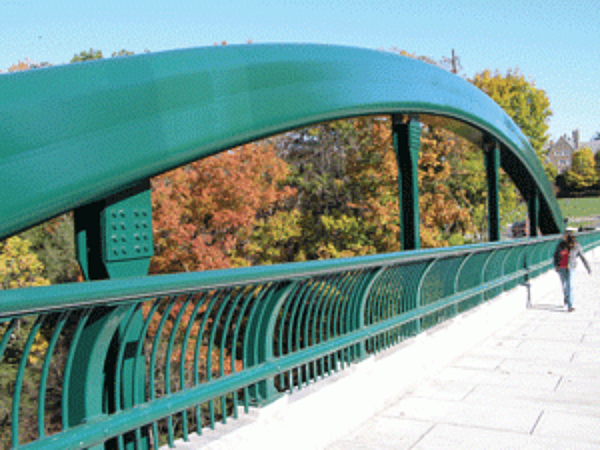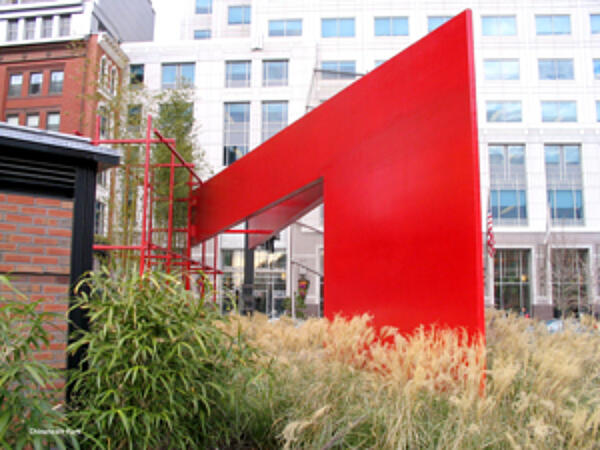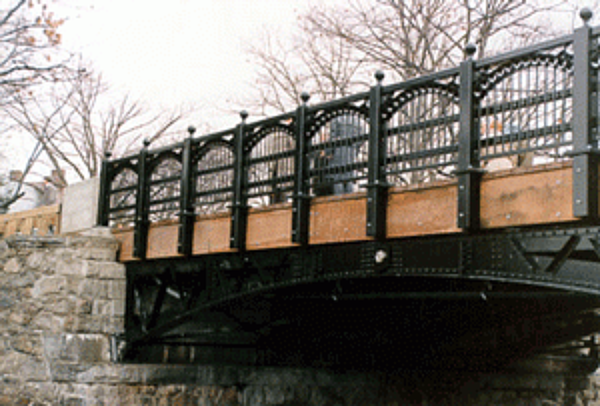Estimating Time to First Maintenance for Duplex Coating Systems
How do I estimate Time to First Maintenance for a Duplex System?

Duplex Systems combine the superior protection of galvanized steel with the additional benefits of another corrosion protection system, such as powder coating or paint, to extend the corrosion protection of a product even further. The synergistic effect of using two coatings extends the service life for unparalleled corrosion protection, while the metallurgically-bonded galvanized coating serves as an ideal primer to provide an impervious barrier for the base steel. When paint/powder coating and galvanized steel are used together, the corrosion protection is superior to either protection system used alone and can last from 1.5 to 2.3 times the combined lifetimes of both systems. In other words, if you had a paint system that lasts 10 years and a hot-dip galvanized system expected to last 70 years, the duplex system would last 120 184 years if you just let the paint and galvanizing wear away naturally. In order to determine approximately where the maintenance-free duplex coating life falls between such a range, it is first required to assess the environmental conditions for the project and determine values for the following parameters:

Paint Life
Estimate the coating life of the paint or powder coating system independent of hot-dip galvanizing for the anticipated environment and application. This information is typically provided by the product manufacturer or from user experience (typically around 10-20 years).
HDG Life
Estimate the Time to First Maintenance (time to 5% red rust) of the hot-dip galvanized steel independent of the paint/powder coating system for the anticipated environment and application. This can be estimated using the Time to First Maintenance charts provided on the AGA website by referring to the zinc coating thickness and the atmospheric environment curve which most closely matches the intended application. For coating thickness, it is conservative to use the minimum required thickness based on the material category and material thickness, determined using Tables 1 and 2 of ASTM A123 for iron and steel products. Alternatively, for steel which has already been galvanized, a coating thickness measurement of the existing article will provide greater accuracy. Alternatively, a more specific Time to First Maintenance can be determined using the Zinc Coating Life Predictor upon input of average annual environmental factors for the area (temperature, rainfall, relative humidity, pollution, and air salinity). Temperature, rainfall, and relative humidity are readily available from The Weather Channel and the National Weather Service for many cities in the United States. The sulfur dioxide (pollution) concentrations are determined from a report produced by EPA that lists the peak air quality statistics for the major pollutants, but many rural cities do not monitor sulfur dioxide levels due to very low concentrations. Air salinity data for numerous environments does not readily exist, but some data is available from the National Atmospheric Deposition Program or from local environmental research organizations for coastal areas. After the time to first maintenance has been determined for atmospheric corrosion, this value should be reduced as necessary to account for other corrosive elements such as exposure to water, sea spray, organic materials, or chemicals. For further guidance or for predicting service life in soil or water environments, contact the AGA Technical Department.

Duplex Multiplication Factor
The Duplex Multiplier ranges from 1.5 to 2.3 and should be selected based on the corrosivity of the environment. 1.5 is the minimum limit meant for the most corrosive environments with high pollution, salt, or humidity, while 2.3 is the maximum for mild and rural environments.
As a guideline, it is possible to select the duplex multiplication factor based on the following environmental conditions:
- 1.5 for Extreme Marine and Extreme Pollution Environments
- 1.5-1.6 for Sea Water and Immersion Applications
- 1.7-2.0 for Industrial and Marine Environments
- 2.0-2.3 for Non-Aggressive Environments (Suburban, Rural, or Very Low Humidity)
Evaluating Maintenance-Free Duplex Coating Life
Once the above three values are determined, then the following formula can be used to determine the approximate maintenance-free coating life to 5% rust (Time to First Maintenance):
Maintenance-Free Duplex Coating Life = (Duplex Multiplication Factor)*(Paint Life + HDG Life)
It is important to note this formula for lifetime calculation assumes no maintenance of the paint/powder coating of the duplex system. In reality, it is often not practical to allow the coating to deteriorate and weather away naturally. It is more likely the owner will maintain the coating system to avoid the unpleasant appearance of a peeling and deteriorating paint system.
According to industry research, the benefits of the synergistic effect allow paint or powder coating over hot-dip galvanizing to last an additional 1.5 to 2.0 times longer than over bare steel. This extended time to first maintenance results in a delayed maintenance cycle for the paint/powder coating system, leading to significant economic advantages over the life of a project. To compare the initial and life-cycle costs of a duplex system to various other corrosion protection systems, visit the Life-Cycle Cost Calculator. Additionally, where maintenance is performed for the paint/powder coating of the duplex system, the hot-dip galvanized coating is never exposed to the environment and the overall duplex coating system will last indefinitely.

There are many examples of duplex systems specified for various environments located in the AGA Project Gallery. Further information, research and case studies on Duplex Systems can be acquired from Duplex Systems, Hot-Dip Galvanizing Plus Painting by J.F.H. van Eijnsbergen.
© 2025 American Galvanizers Association. The material provided herein has been developed to provide accurate and authoritative information about after-fabrication hot-dip galvanized steel. This material provides general information only and is not intended as a substitute for competent professional examination and verification as to suitability and applicability. The information provided herein is not intended as a representation or warranty on the part of the AGA. Anyone making use of this information assumes all liability arising from such use.

